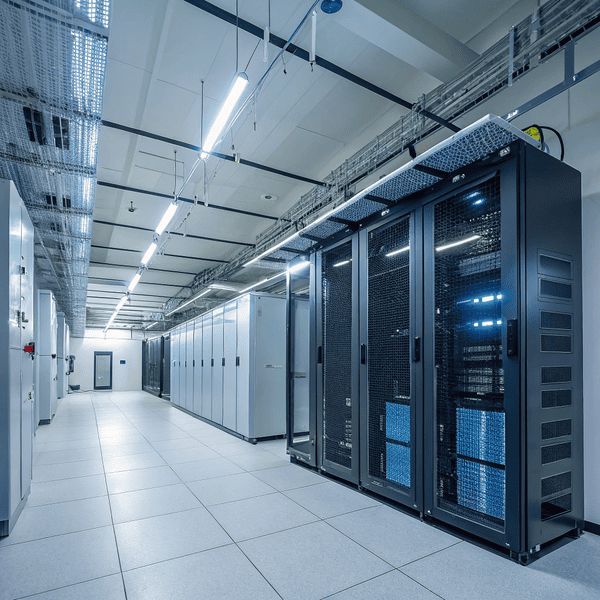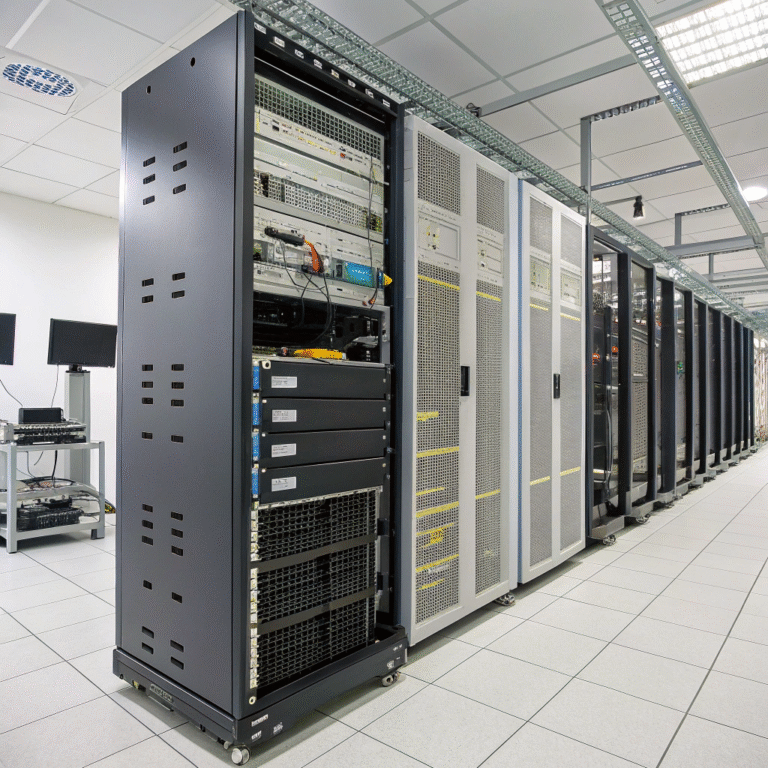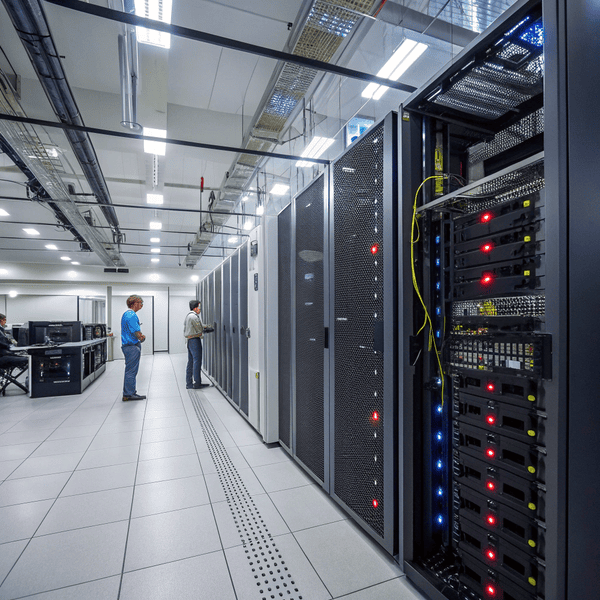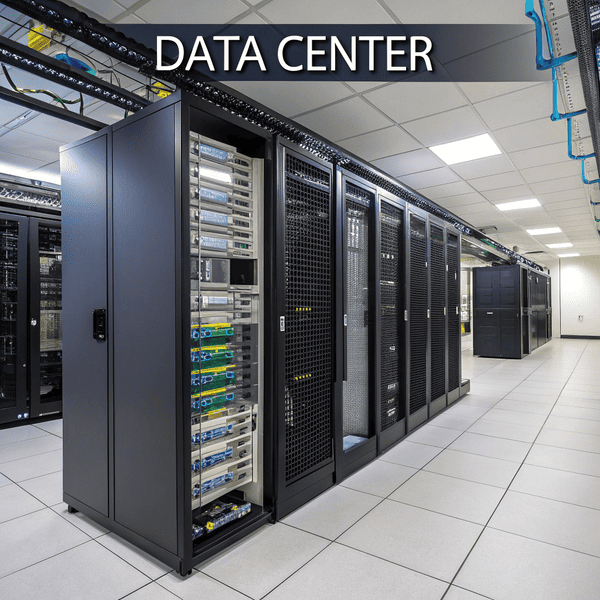Ever wonder what’s really behind your favorite cloud apps or business servers? Understanding the hardware and technology inside a data center can help you make better decisions for your own projects.
A data center is packed with servers, storage systems, networking devices, power backups, and cooling equipment. Together with advanced software and automation, these create secure and efficient A data center[^1] is packed with servers, storage systems, networking devices, power backups, and cooling equipment. Together with advanced software and automation, these create secure and efficient digital service environments.
[^1]: Understanding data centers is crucial for grasping modern digital infrastructure and its role in business operations.
.
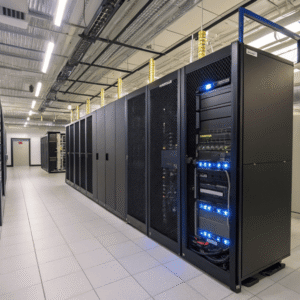
On my first major IT project, I was amazed to find how every device and system inside a data center worked together like an orchestra. From the hardware that powers every workload to the technologies that keep them running without a hitch, everything has a role to play. Let’s dive into the world inside the glass walls.
What is the hardware in a data center?
It’s easy to think of a data center as a big room full of computers, but do you know what hardware is actually in use?
The hardware in a data center includes servers, storage arrays, networking switches, routers, firewalls, power supplies, UPS systems, generators, and cooling units—all The hardware in a data center[^1] includes servers, storage arrays, networking switches, routers, firewalls, power supplies, UPS systems, generators, and cooling units—all critical for round-the-clock operation.
[^1]: Understanding the components of a data center can help you optimize your IT infrastructure and ensure reliability.
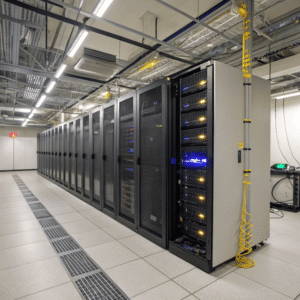
When I first walked through a data center, I saw more than just rows of blinking lights. Servers run software and store data. Storage arrays like SAN and NAS handle millions of files. Networking hardware, including switches and routers, move data internally and out to the web. Firewalls protect against threats. Power solutions, such as UPSs and backup generators, keep everything up if there’s a grid failure. Cooling systems—using CRACs or even liquid cooling—protect equipment from overheating. Here’s a table to help clarify the essentials:
| Hardware Category | Function | Examples |
|---|---|---|
| Servers | Data processing, application hosting | Rack and blade servers |
| Storage | Data saving and retrieval | SAN, NAS, SSDs, HDDs |
| Networking | Data movement and connectivity | Switches, routers, firewalls |
| Power | Backup and steady electricity | UPS, PDUs, generators |
| Cooling | Keeps systems at safe temperature | CRAC units, chillers |
Each part must work in harmony, or the entire digital experience could break down in seconds.
What are data center technologies?
You might have heard people mention “data center technology,” but what does it actually mean and why does it matter?
Data center technologies include not just the hardware but also the virtualization, cloud platforms, Data center technologies include not just the hardware but also the virtualization, cloud platforms[^1], automation tools, monitoring software, and security solutions that enable efficient, scalable, and resilient data operations.
[^1]: Explore this link to discover top cloud platforms that enhance data center efficiency and scalability.
, monitoring software, and security solutions that enable efficient, scalable, and resilient data operations.
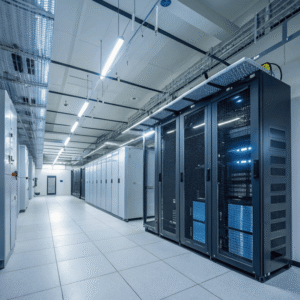
At one point in my career, I saw a big shift from just adding hardware to using smarter technologies. Virtualization allows a data center to run hundreds of virtual machines on one physical server, helping companies save money and scale fast. Cloud platforms offer resources on demand—no need to own the gear yourself. Automation tools help manage backups, upgrades, and patching with little human effort. Monitoring software watches thousands of devices for failures or unusual activity, keeping services reliable. Cybersecurity tech like next-generation firewalls and intrusion detection systems are now essential, blocking threats before they can disrupt business. Here’s how it all fits together:
| Technology | Purpose |
|---|---|
| Virtualization | Maximizes server hardware, flexible scaling |
| Cloud Platforms | Pay-as-you-go resource expansion |
| Automation Tools | Reduce manual management, speed up ops |
| Monitoring | Track health, performance, and security |
| Security Solutions | Protect against digital threats |
Data center tech is always advancing, blending hardware and software in creative ways.
What equipment is needed for a data center?
If you had to build a data center from scratch, what equipment would you need to make sure it works safely and reliably?
A fully functional data center needs servers, storage arrays, networking devices, A fully functional data center[^1] needs servers, storage arrays, networking devices, power infrastructure, cooling equipment, fire suppression, access control, and monitoring gear to protect data and keep systems online.
[^1]: Understanding the components of a data center can help you optimize your IT infrastructure and ensure reliability.
, cooling equipment, fire suppression, access control, and monitoring gear to protect data and keep systems online.

When I helped upgrade an older data center, I realized how each equipment type played a critical role. For computing and storage, you’ll need rack servers, blade servers, SAN or NAS solutions, and scalable SSD/HDD arrays. Networking requires switches, routers, cabling, and sometimes fiber optics for speed. Power gear such as UPS units, diesel or gas generators, and power distribution units keep systems running even during blackouts. Cooling equipment—CRAC units, liquid chillers, raised floors—are must-haves to avoid expensive downtime. Don’t forget fire suppression systems (often gas-based), biometric security, surveillance cameras, and environmental monitors. Here’s a structured list:
| Equipment Type | What It Does | Why Important |
|---|---|---|
| Servers | Run workloads and host data | Heart of all operations |
| Storage | Store and protect business data | Backup, recovery, speed |
| Networking | Connects everything together | Data flow and security |
| Power Infrastructure | Delivers stable, backup power | Prevents costly downtime |
| Cooling Equipment | Controls temperature and humidity | Keeps hardware reliable |
| Fire Suppression | Protects against fires | Safety and compliance |
| Security Systems | Keeps intruders out | Reduces physical risk |
| Monitoring Gear | Tracks environment and status | Early warning for problems |
Each layer adds more protection, reliability, and efficiency to modern digital infrastructure.
Conclusion
Modern data centers depend on reliable hardware, cutting-edge technologies, and comprehensive equipment to deliver secure, scalable, and always-on digital services.

